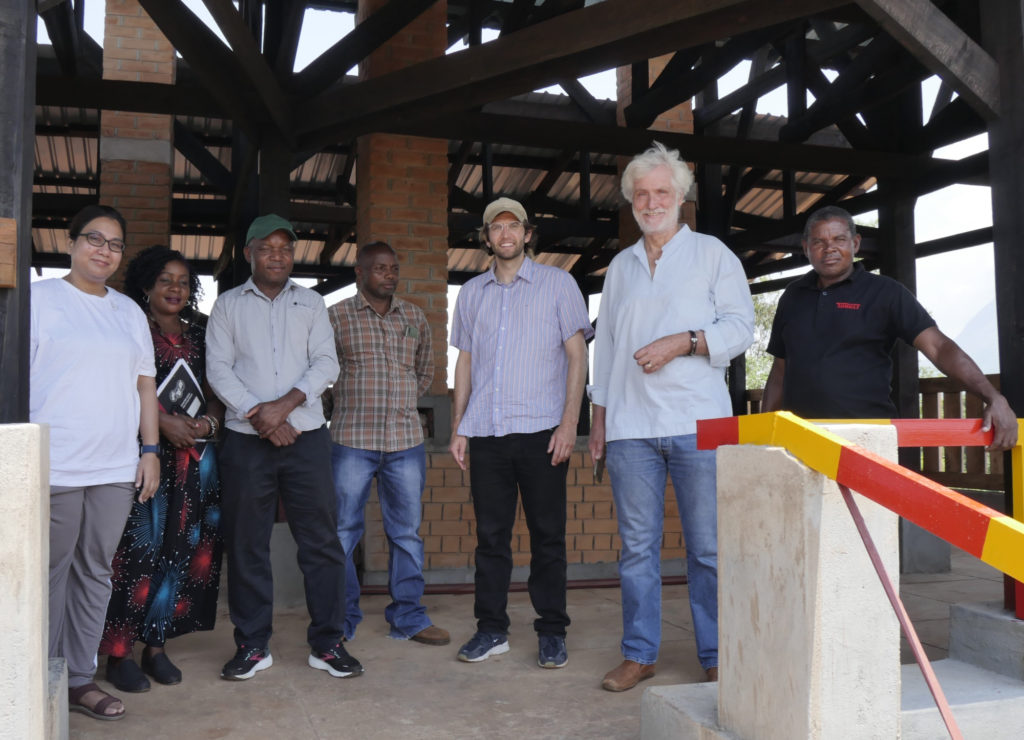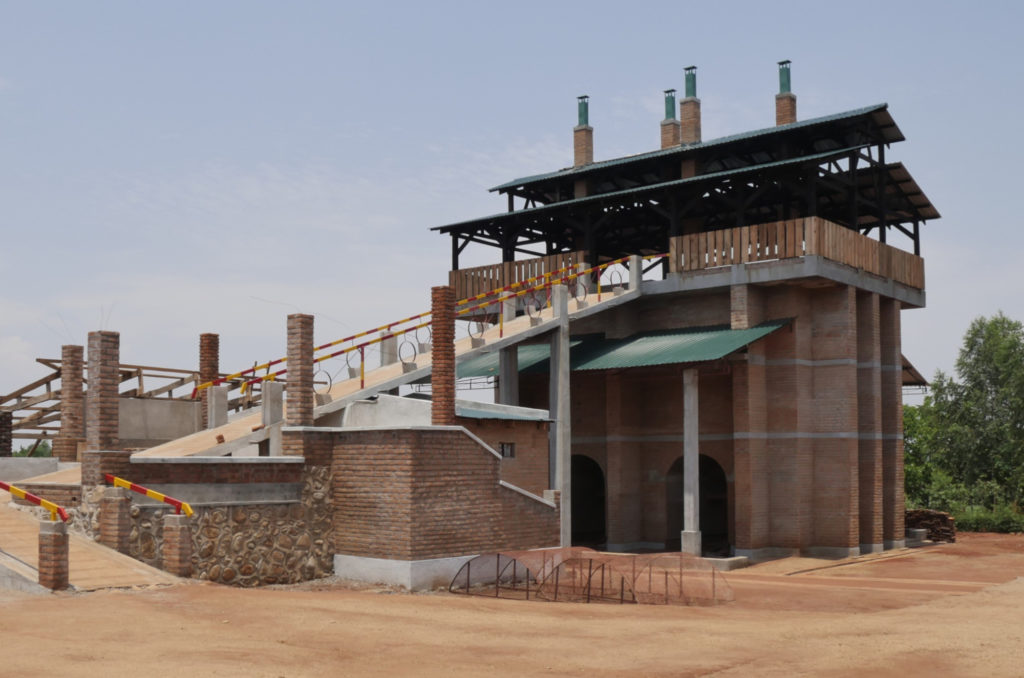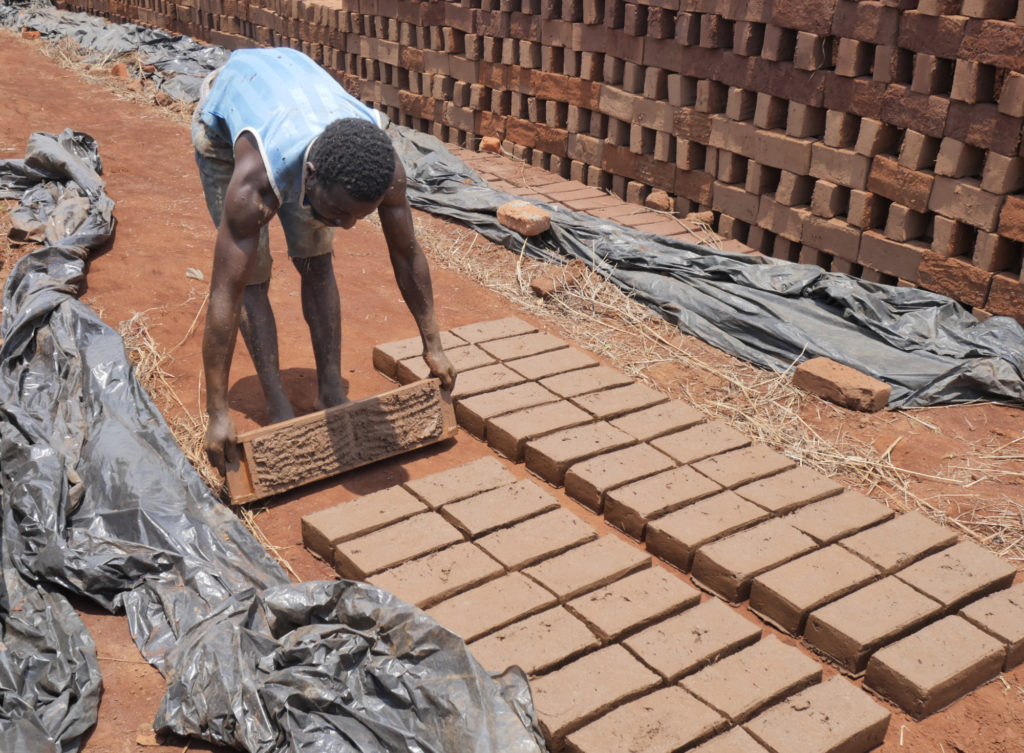atmosfair is breaking new ground by implementing climate protection in the construction sector. With brick kilns that require less than half the energy of traditional production sites, we aim to provide Malawi’s growing population with much-needed building materials while benefiting the local ecosystem.
Mulanje, Malawi, December 2024: The construction company New Vision Anenenji Building Construction (NEVAGAS B.C.) has completed the first efficient brick kiln, financed by atmosfair. atmosfair project manager David Grüttner inspected the kiln alongside auditors from the certification body RINA. Their task is to verify that the Vertical Shaft Brick Kiln (VSBK) achieves actual CO₂ reductions. A tour of the completed facility confirmed that the kiln is ready to begin operations soon.

Charles Nasala, CEO of NEVAGAS, is enthusiastic about the expanded production capacity: “This kiln will enable us to produce over three million bricks annually. That’s enough to build 120 houses – something we urgently need here. Malawi’s population has grown by four million over the past decade.” The innovative VSBK, funded through our climate protection contributions, produces Malawi’s essential building materials far more efficiently than traditional kilns. As a result, brick producers will save approximately 1,000 tons of carbon dioxide each year.
Forest Conservation Through Alternative Fuels
“A vertical shaft kiln like this one requires less than half the energy of a traditional kiln to fire bricks,” explains David Grüttner. “This energy comes from waste materials such as rice husks, eliminating the need to cut down trees.” Biomass waste from rice or tea production, which would otherwise decompose or be burned by farmers, releasing CO₂ into the atmosphere without any benefit, is repurposed as fuel for the kiln. This approach spares trees from being used as firewood, a critical advantage in a region threatened by deforestation.
The Mulanje brick kiln will directly employ 20 people, with an additional 15 jobs created in brick pre-production and another 15 positions in management and sales. This initiative generates employment opportunities in a country struggling with economic challenges due to limited export capabilities.

Further Expansion Planned in Malawi
Mulanje is not the only location where we are financing the construction of a VSB kiln. A similar brick kiln, operating on the same principle, is also under construction in the capital city of Lilongwe. However, construction by Fayam Limited is not yet complete. During his stay in Malawi, David Grüttner met with representatives from five additional construction companies interested in producing their own bricks. He was supported by staff from MIERA, a project of the German Agency for International Cooperation (GIZ) that focuses on the economic and social development of rural Malawi. It is likely that atmosfair will soon finance more kilns based on the VSBK principle.
A Vertical Shaft Brick Kiln works by placing raw brick molds into a vertical shaft from the top, which are gradually moved downward as they are fired. Seventy percent of the biofuel, derived from biomass waste, is already mixed into the brick material, allowing the bricks to be efficiently heated from within. The remaining biomass fuels an external fire. During the 24-hour firing process, the kiln uses over 50 percent less energy than traditional clamp kilns. In clamp kilns, raw bricks are stacked, and fire is lit in cavities beneath the stack, leading to significant energy loss. By contrast, the shafts of a VSBK are insulated to minimize heat loss. Additionally, the VSBK design channels exhaust gases in a way that reduces workers’ exposure to harmful smoke compared to clamp kilns.
Charles Nasala plans to partially automate the pre-production of raw bricks. In the near future, he aims to use a self-built extruder – a machine that feeds a mixture of clay and fuel into evenly sized portions on a conveyor belt. These portions would then be cut into shape by blades, allowing the production of ten uniformly shaped bricks at a time.



 Share
Share Tweet
Tweet